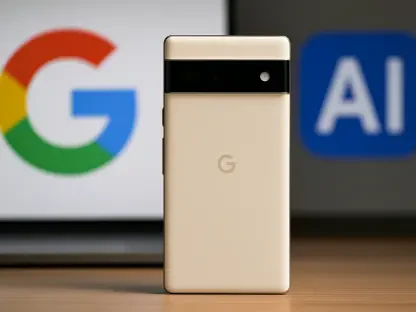In a world increasingly driven by technology, wearable health devices have emerged as a significant influence on personal healthcare management. These gadgets, such as smartwatches and fitness trackers, along with sophisticated tools like smart rings and continuous glucose monitors, are promoted as revolutionary aids for those eager to enhance their control over personal health metrics. They come equipped with features that diligently track heart rate, analyze sleep patterns, measure blood oxygen levels, and even gauge stress levels. The widespread appeal of these devices is further amplified by endorsements from public figures, such as U.S. Health Secretary Robert F. Kennedy Jr., who champions their potential to drastically improve national health statistics. However, despite their promising capabilities, these devices carry an intricate range of implications, both beneficial and challenging.
The Dual Nature of Wearable Tech
Wearable health technology embodies a dual nature, characterized by both significant promise and notable challenges. On one side, devices like the Apple Watch and Oura rings are celebrated for their sleek, modern designs coupled with user-friendly interfaces. They offer diverse features to users, ranging from detecting heart rhythm abnormalities and monitoring sleep quality to providing subtle reminders for breathing exercises and hydration. Continuous glucose monitors reside at the forefront of technology, initially conceived for diabetics but increasingly utilized by individuals interested in bio-optimization—an emerging trend focused on pursuing incremental health improvements.
Despite these advancements, the exploration into wearables’ effectiveness reveals an experience marked by both optimism and caution. Basic functionalities, such as step tracking and heart rate measurement, are widely accepted as accurate. However, as metrics become more complex, like sleep data, calorie counts, and stress levels, discrepancies in accuracy frequently surface. These figures often rely on algorithms lacking standardization, leading to issues with medical validation. The result is that users may face increased anxiety from continuous self-monitoring, particularly if the data is difficult to interpret correctly.
Privacy Concerns and Ethical Implications
Data privacy emerges as a paramount concern surrounding the adoption of wearable technology. These devices collect vast amounts of biometric data, leading to worries about user autonomy regarding their personal information. The potential for this data to be shared, sold, or collected without explicit user consent raises significant privacy issues. As technology advances, these wearables risk evolving into surveillance tools, not only for tech companies but also for insurance agencies, employers, and possibly governmental entities. The prospect of having one’s health data accessible to external parties without proper safeguards presents a challenging ethical landscape.
Moreover, while wearable technology has the potential to revolutionize future healthcare paradigms, it is far from a complete solution. These devices cannot replace the informed insights of seasoned medical professionals, nor can they address deep-rooted socioeconomic factors underpinning chronic health issues. Factors such as economic inequality, poor nutrition, and restricted healthcare access pose challenges beyond the scope of what technology can remedy alone. There is a general awareness that while advocating for widespread wearable health adoption, caution is necessary until there is robust evidence of their long-term health benefits. Ensuring enhanced privacy protections and establishing stringent ethical guidelines remain vital to realizing the true transformative power of this technological trend.
Integrating Clinical Insights
The dialogue about wearable technology extends into the realm of clinical perspectives, highlighting the need for a collaborative approach in dissecting these devices’ complexities. Emerson Perin, MD, an interventional cardiologist and medical director at The Texas Heart Institute, supports integrating technology with clinical expertise to ensure a holistic understanding of wearables’ potential. He asserts that while wearables offer invaluable opportunities for proactive healthcare, relying solely on these devices is insufficient for addressing broader health challenges. A joint effort that encompasses healthcare practitioners, technologists, and policymakers is pivotal for navigating the complexities posed by wearable technology.
Ultimately, wearable health technology presents a vision that is both hopeful and fraught with cautionary tales. It emphasizes the promise of preventive care and individualized health management but requires thoughtful scrutiny, legislative measures, and responsible implementation to yield tangible health benefits. By addressing these concerns, it is possible to harness wearable technology’s potential within a larger health and wellness context, not as a fleeting trend but as a substantive evolution in healthcare advancement.
Moving Forward with Wearable Technology
Wearable health technology, like the Apple Watch and Oura rings, holds both exciting potential and significant challenges. These devices are praised for their sleek designs and user-friendly interfaces, offering features like heart rhythm detection, sleep monitoring, and reminders for breathing exercises and staying hydrated. Continuous glucose monitors, once primarily for diabetics, are now becoming popular among those interested in bio-optimization, a trend focused on fine-tuning health improvements.
Despite innovation, the effectiveness of wearables inspires both hope and skepticism. While basic functions like step tracking and heart rate are trusted, more complex metrics such as sleep, calories, and stress levels often reveal accuracy issues. These advanced metrics depend on algorithms that lack standardization, raising concerns about medical validation. As a result, users might experience increased anxiety from self-monitoring, especially when data is difficult to interpret. This duality highlights both the promise and the perils of relying too heavily on wearable health technology.









